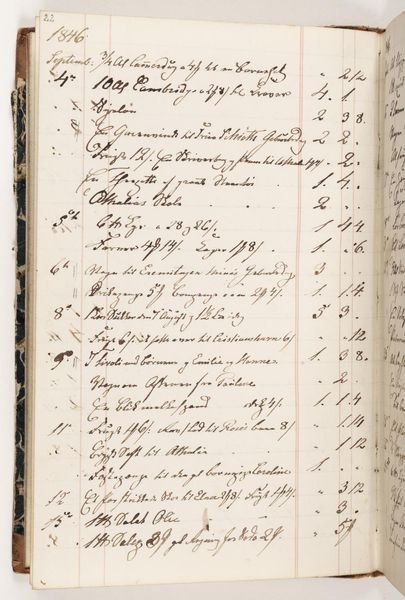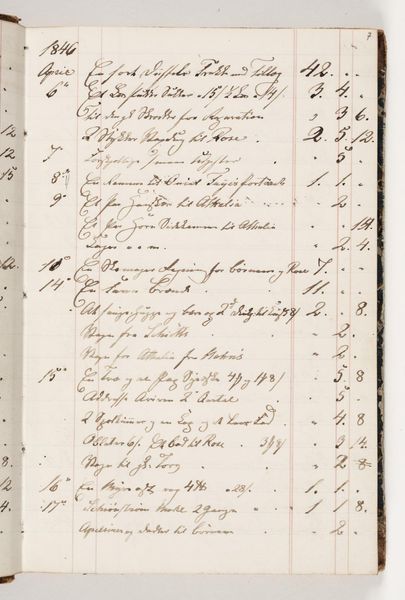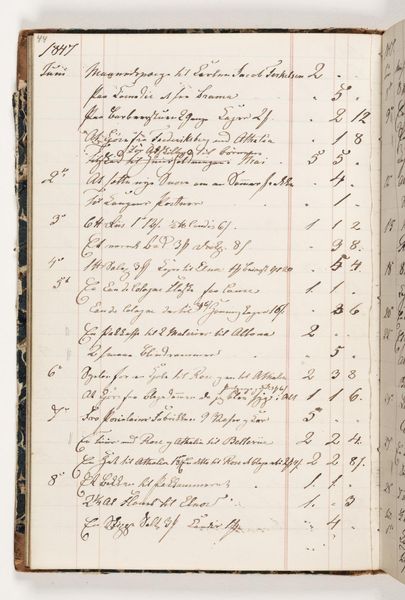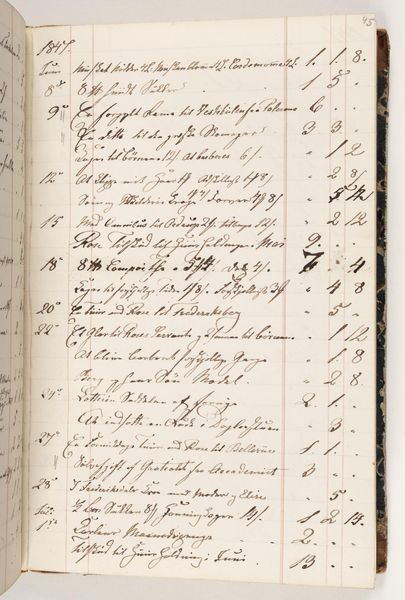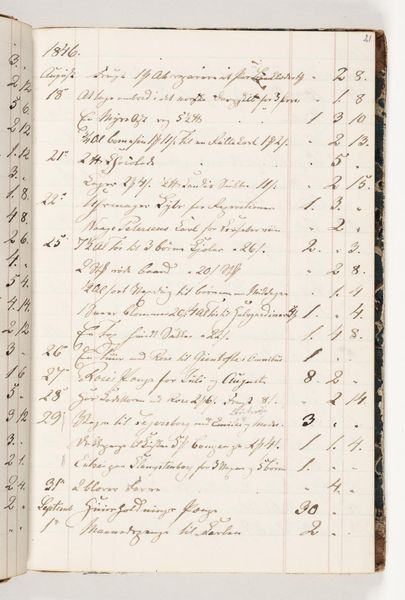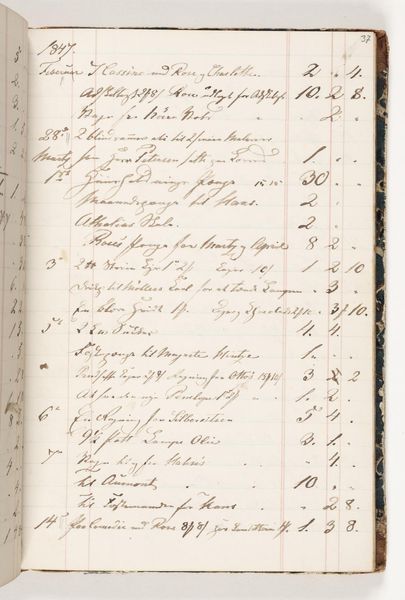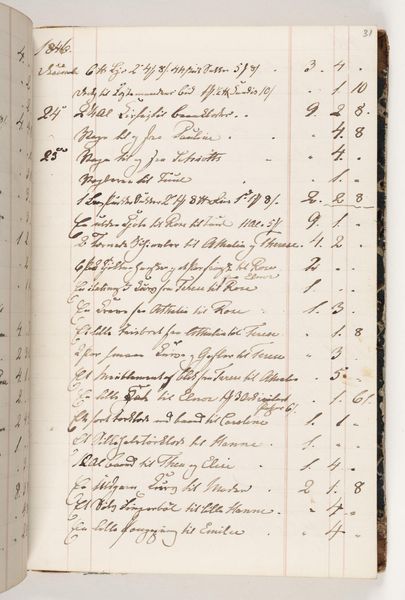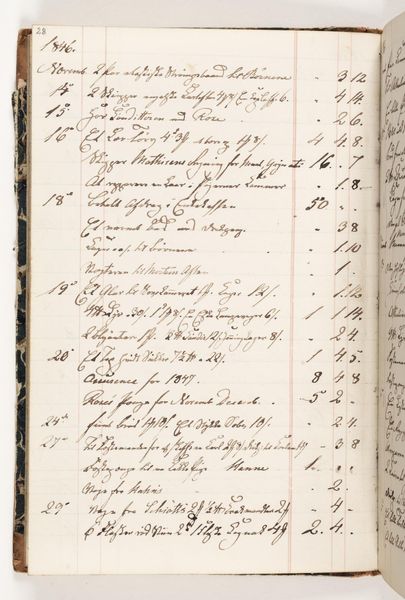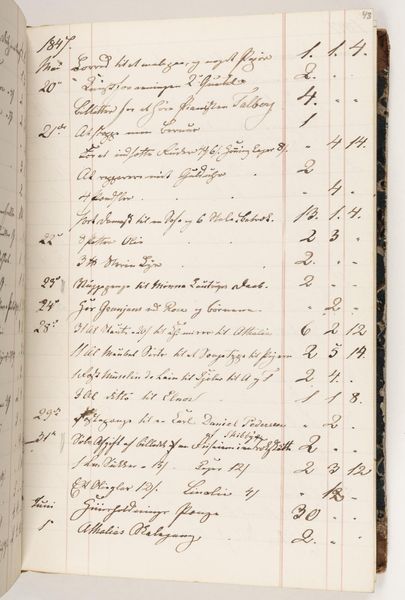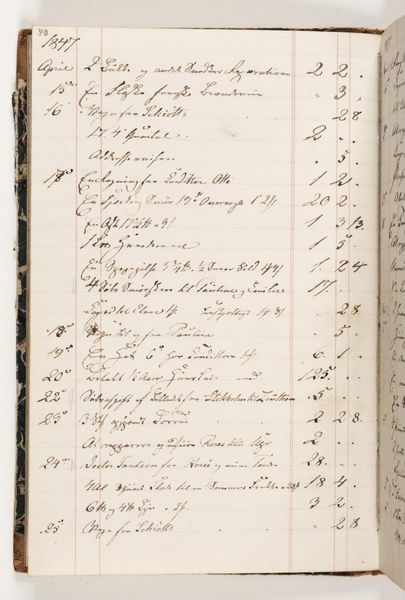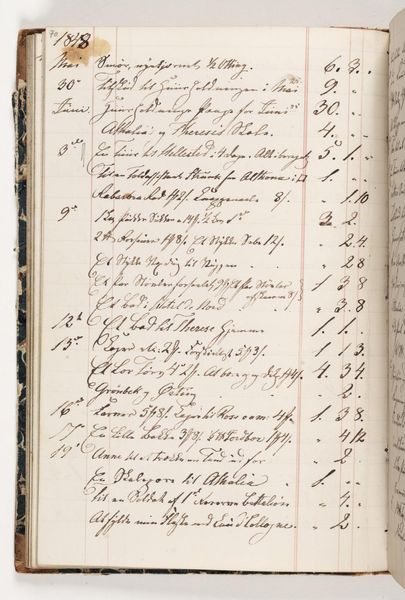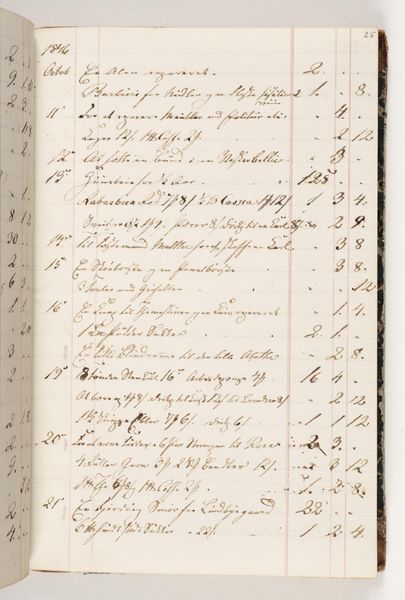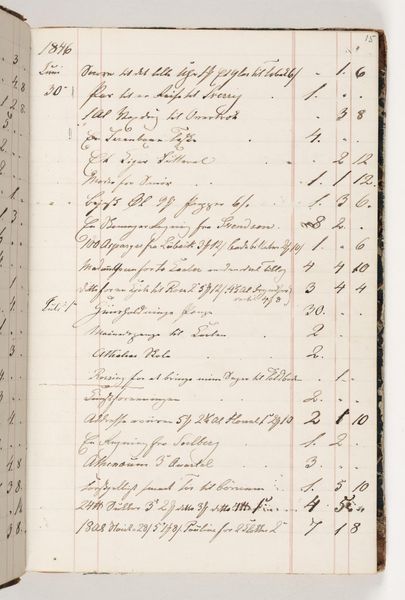
drawing, paper, ink
#
drawing
#
paper
#
ink
#
sketchbook art
Dimensions: 200 mm (height) x 130 mm (width) (bladmaal)
Curator: Let's delve into this fascinating ledger sheet, "Regnskab 1846," ink on paper by Martinus Rørbye. Editor: This piece looks like an ordinary accounting document, yet I know it’s regarded as a work of art. I’m intrigued – what can we make of something so...utilitarian? Curator: Exactly. Its value resides not just in its aesthetic qualities, but within its materiality and what that tells us about its creation and context. What can the paper itself, the ink, and the very act of recording these transactions illuminate? Editor: Well, I guess the meticulous handwriting suggests a specific kind of labor, a careful recording…it feels different from typed accounts. Curator: Precisely. Consider the means of production. Ink, paper, and handwriting—all processes reflecting a pre-industrial system. Each entry represents a specific action, a transaction. How does understanding the labour involved shift our perception? Editor: I hadn’t thought about it like that, it definitely transforms the work. Does its existence in a museum elevate a commonplace object? Does that change its meaning? Curator: Absolutely. Placing a piece of daily life in the rarified context of a museum begs these questions about art’s traditional boundaries. We contemplate labour, materiality, and consumption on a more conceptual level. Editor: It’s fascinating how something that appears so simple can become such a complex site for exploring history and economics. Thanks for pointing out these materialist aspects! Curator: My pleasure. These seemingly mundane objects frequently provide more resonant perspectives when you interrogate their physical production, and that provides invaluable insight.
Comments
No comments
Be the first to comment and join the conversation on the ultimate creative platform.
